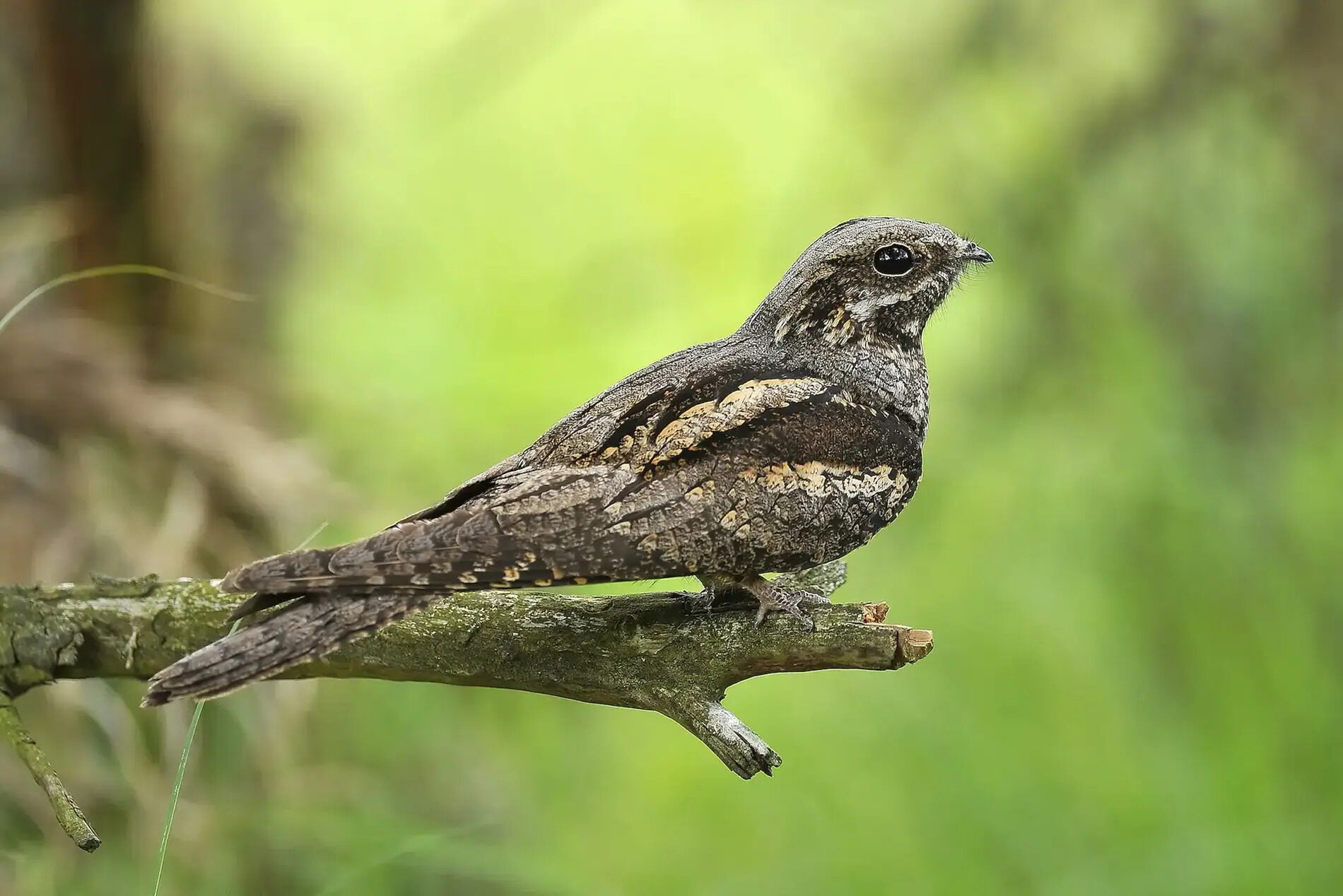
What makes the nightjar so unique? This mysterious bird, often called the "goatsucker," has fascinated people for centuries. Nightjars are nocturnal, meaning they are most active at night. Their cryptic plumage helps them blend seamlessly into their surroundings during the day. These birds have a wide, gaping mouth perfect for catching insects mid-flight. Unlike many birds, nightjars don't build nests; instead, they lay their eggs directly on the ground. Their eerie, haunting calls can be heard echoing through forests and grasslands at dusk. Nightjars also have an unusual habit of perching along branches rather than across them. This unique behavior, along with their silent flight, makes them one of nature's most intriguing creatures.
Mysterious Nightjars
Nightjars are fascinating birds often shrouded in mystery due to their nocturnal habits. These elusive creatures have unique characteristics that make them stand out in the avian world. Let's dive into some intriguing facts about nightjars.
-
Nightjars are part of the Caprimulgidae family, which includes around 100 species of nocturnal birds.
-
They are also known as "goatsuckers" due to an old myth that they suckle from goats, which is entirely false.
-
Nightjars have excellent camouflage, blending seamlessly into their surroundings during the day.
-
Their plumage often resembles the bark of trees or fallen leaves, making them nearly invisible when roosting.
Unique Behaviors
Nightjars exhibit some unique behaviors that set them apart from other birds. Their nocturnal lifestyle and feeding habits are particularly interesting.
-
Nightjars are crepuscular, meaning they are most active during dawn and dusk.
-
They feed primarily on insects, catching them in flight with their wide, gaping mouths.
-
Their diet mainly consists of moths, beetles, and other flying insects.
-
Nightjars have a distinctive "churring" call, which can be heard during their active hours.
Nightjar Species
There are many species of nightjars, each with its own unique traits and habitats. Here are some notable ones.
-
The Common Nighthawk is found across North and Central America and is known for its erratic flight patterns.
-
The European Nightjar is widespread across Europe and Asia, migrating to Africa during the winter.
-
The Lesser Nighthawk is smaller and found in the southwestern United States, Mexico, and Central America.
-
The Australian Owlet-nightjar is unique to Australia and has a more owl-like appearance.
Reproduction and Nesting
Nightjars have interesting reproductive habits and nesting behaviors that ensure the survival of their offspring.
-
Nightjars do not build traditional nests; instead, they lay their eggs directly on the ground.
-
Their eggs are well-camouflaged, blending in with the surrounding environment to avoid predators.
-
Both parents take turns incubating the eggs and caring for the chicks.
-
Nightjar chicks are precocial, meaning they are relatively mature and mobile shortly after hatching.
Adaptations and Survival
Nightjars have evolved several adaptations that help them survive in their nocturnal niche.
-
Their eyes are adapted for low-light conditions, allowing them to see well at night.
-
Nightjars have a unique "bristle" around their mouths, which helps them catch insects in flight.
-
They can enter a state of torpor, lowering their metabolic rate to conserve energy during periods of food scarcity.
-
Nightjars are known for their silent flight, which helps them sneak up on prey and avoid detection by predators.
Cultural Significance
Nightjars have made their mark in various cultures and folklore, often surrounded by myths and legends.
-
In some cultures, nightjars are considered omens of death or misfortune due to their eerie calls.
-
Conversely, other cultures view them as protectors of the night, warding off evil spirits.
-
The nightjar's call has inspired various names, such as "whip-poor-will" and "poorwill," based on the sounds they make.
-
Nightjars have been featured in literature and poetry, often symbolizing mystery and the unknown.
Conservation Status
Despite their elusive nature, nightjars face several threats that impact their populations.
-
Habitat loss due to deforestation and urbanization is a significant threat to nightjars.
-
Pesticide use reduces the availability of insects, their primary food source.
-
Climate change affects their migratory patterns and breeding seasons.
-
Conservation efforts include habitat protection and creating awareness about the importance of nightjars.
Fun Facts
Here are some fun and lesser-known facts about nightjars that highlight their uniqueness.
-
Nightjars can fly long distances during migration, sometimes covering thousands of miles.
-
They have a unique way of drinking water by skimming the surface of ponds and lakes while in flight.
-
Nightjars can live up to 12 years in the wild, although many do not reach this age due to predation and other threats.
-
Some nightjar species have been observed using "anting," a behavior where they allow ants to crawl over their bodies, possibly to help remove parasites.
Nightjars: Nature's Nocturnal Wonders
Nightjars are truly fascinating creatures. Their camouflage skills are top-notch, blending seamlessly into their surroundings. These birds are mostly active at night, hunting insects with impressive precision. Their unique calls, often heard at dusk, add a mysterious charm to the night. Despite their elusive nature, nightjars play a crucial role in controlling insect populations. They’re found in various habitats worldwide, showcasing their adaptability. Understanding these birds helps us appreciate the delicate balance of our ecosystems. Next time you hear a strange call at night, it might just be a nightjar going about its nightly routine. So, keep an ear out and maybe you’ll catch a glimpse of these incredible nocturnal wonders.
Was this page helpful?
Our commitment to delivering trustworthy and engaging content is at the heart of what we do. Each fact on our site is contributed by real users like you, bringing a wealth of diverse insights and information. To ensure the highest standards of accuracy and reliability, our dedicated editors meticulously review each submission. This process guarantees that the facts we share are not only fascinating but also credible. Trust in our commitment to quality and authenticity as you explore and learn with us.
